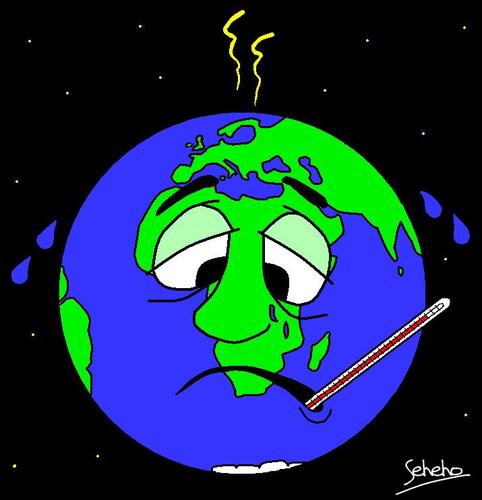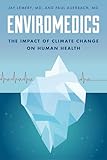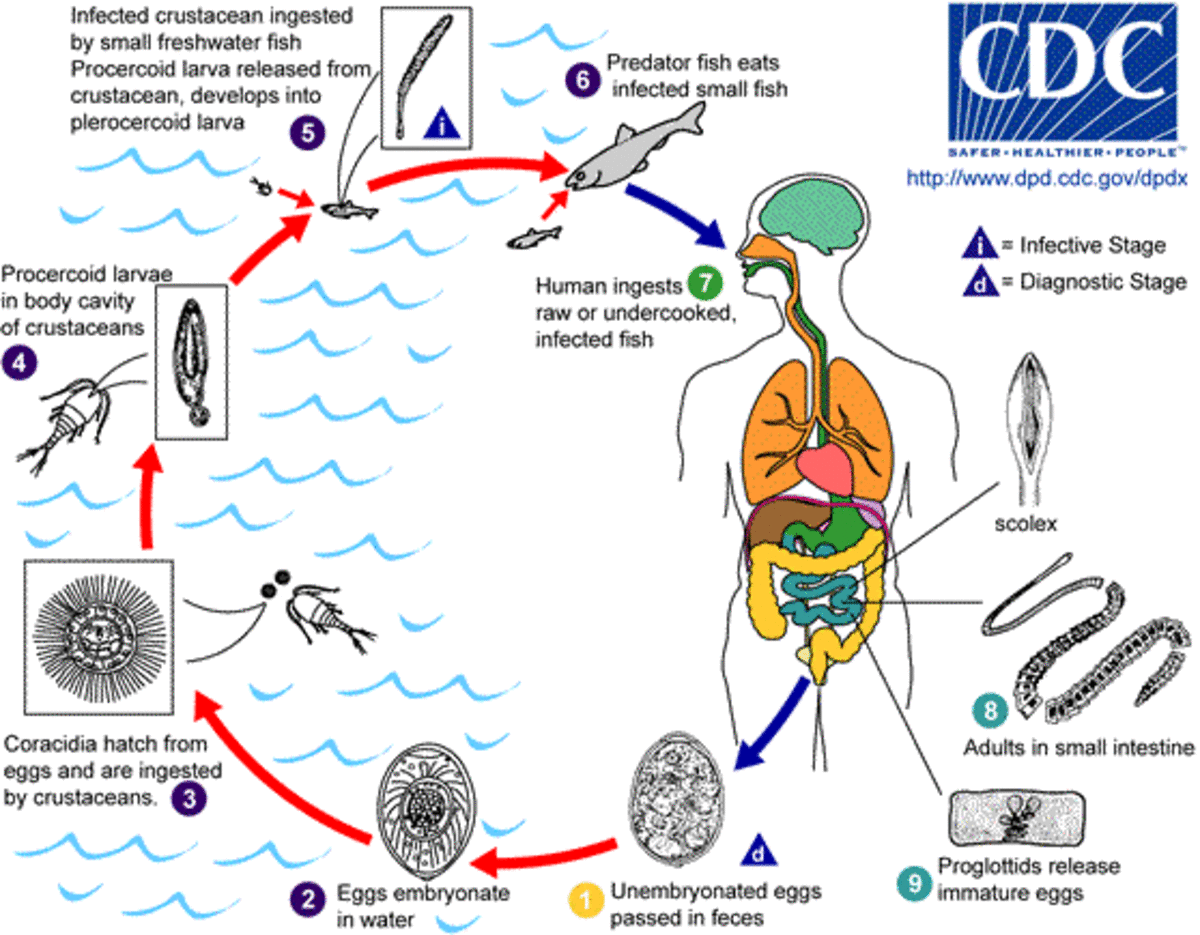Climate Change and Human Health

How Does Climate Change Effect Human Health?
We hear a lot about whether or not global warming is a real or imagined phenomenon, how global warming will affect the environment, and how humans are contributing to global warning. What we haven’t heard so much about, is how climate change in general affects human health, or what, if anything, humans can do to prevent or prepare for the impact of climate change on human health. Climate change might include global warming, but also includes heat waves, blizzards, hurricanes, floods, cold fronts, or any other changes in climate that could be natural or caused by humans directly or indirectly.
The National Institutes of Health (NIH) is the federal agency responsible for conducting medical research and for investigating causes, treatments and cures for diseases. The NIH led an interagency group whose task was to identify health risks associated with climate change. The group recently released its report, A Human Health Perspective on Climate Change, which identifies 11 categories of disease and other human health consequences related to climate change; some that are already occurring and others that will occur.
11 Categories of Diseases and Human Health Consequences
1 Asthma, Respiratory Allergies, and Airway Diseases
2 Cancer
3 Cardiovascular Disease and Stroke
4 Foodborne Diseases and Nutrition
5 Heat-Related Morbidity and Mortality
6 Human Developmental Effects
7 Mental Health and Stress-Related Disorders
8 Neurological Diseases and Disorders
9 Vectorborne and Zoonotic Diseases
10 WaterborneDiseases
11 Weather-Related Morbidity and Mortality
The full report describes in detail what is currently known about these conditions, what research needs to be done to better understand the effects of climate change on health, who will be most vulnerable, and what public health efforts will be most beneficial. The report acknowledges that humans have adapted and will continue to adapt to climate changes, and draws attention to the need for additional research and actions that can be taken to minimize if not prevent human suffering in weather related events and tragedies. The report can be viewed in its entirety by clicking the link below.
A Human Health Perspective on Climate Change
Following are excerpts taken directly from the report that show only what is already known about the impact of climate change on the 11 categories of diseases and health consequences identified. The excerpts provide a sense of the scope and complexity of climate related health problems, and a basic understanding of some of these diseases and health conditions; what they are, how they are transmitted, and how prevalent they are.
Asthma, Respiratory Allergies, and Airway Diseases
Cancer
Cardiovascular Disease and Stroke
Foodborne Diseases and Nutrition
Heat-Related Morbidity and Mortality
Human Developmental Effects
Mental Health and Stress Related Disorders
Mental health disorders comprise a broad class of illnesses from mild disorders, such as social phobias and fear of speaking in public, to severe diseases including depression and suicidal ideation. Many mental health disorders can also lead to other chronic diseases and even death. Stress-related disorders derive from abnormal responses to acute or prolonged anxiety, and include diseases such as obsessive-compulsive disorder and post-traumatic stress disorder. It is estimated that 26.2% of Americans over the age of 18 suffer from a diagnosable mental health disorder in a given year; 9.5% suffer from mood disorders, and 6% suffer from serious mental illness. However, mental health is an area of public health that is often a low research priority and one whose impacts on human and societal well being are typically underestimated, both within the United States and globally.
Individuals already vulnerable to mental health disease and stress-related disorders are likely to be at increased risk of exacerbated effects following extreme weather or other climate change events. Prolonged heat and cold events can create chronic stress situations that may initiate or exacerbate health problems in populations already suffering from mental disease and stress-related disorders. In addition, psychotropic drugs interfere with the body’s ability to regulate temperature; individuals being treated with these drugs could be at increased risk of heat-related illness during extreme heat events.
The severity of mental health impacts following an extreme climate event will depend on the degree to which there is sufficient coping and support capacity, both during and following the event. During the recovery period following an extreme event, mental health problems and stress-related disorders can arise from geographic displacement, damage or loss of property, death or injury of loved ones, and the stress involved with recovery efforts. The most common mental health conditions associated with extreme events range from acute traumatic stress to more chronic stress-related conditions such as post-traumatic stress disorder, complicated grief, depression, anxiety disorders, somatic complaints, poor concentration, sleep difficulties, sexual dysfunction, social avoidance, irritability, and drug or alcohol abuse.
The chronic stress-related conditions and disorders resulting from severe weather or other climate change-related events may lead to additional negative health effects. Studies have shown a negative relationship between stress and blood glucose levels, including influence on glycemic control among patients with type 2 diabetes. Evidence has also shown that human response to repeated episodes of acute psychological stress or to chronic psychological stress may result in cardiovascular disease. Although a direct cause and effect relationship has not yet been proven, some research has indicated a link between various psychological factors and an increased risk of developing some forms of cancer, as well as the progression of cancer in those already presenting with the disease.
Neurological Diseases and Disorders
The United States has seen an increasing trend in the prevalence of neurological diseases and deficits. Onset of diseases such as Alzheimer Disease (AD) and Parkinson Disease (PD) is occurring at earlier ages across the population. Environmental factors are suspected of playing a large role in both the onset and severity of these conditions, although there is a gap in our understanding of this role, especially in relation to genetics, aging, and other factors.
While some of these changes in neurological health likely are due to the aging of a large portion of the population, learning disabilities that affect children also are on the rise, and there are indicators that environmental factors may be involved including changes in climate that may exacerbate factors affecting the rates and severity of neurological conditions.
Neurological conditions generally carry high costs in terms of quality of life for both the sufferer and the caregiver and increased healthcare stresses on the economy and the workforce. Factors affected by climate with particular implications for neurological functioning include malnutrition; exposure to hazardous chemicals, bio-toxins, and metals in air, food, and water; and changes in pest management.
Vectorborne and Zoonotic Diseases
Vectorborne and zoonotic diseases (VBZD) are infectious diseases whose transmission cycles involve animal hosts or vectors. Vectorborne diseases are those in which organisms, typically blood-feeding arthropods (insects, ticks, or mites) carry the pathogen from one host to another, generally with amplification (increased virulence) in the vector (for example, malaria). Zoonoses are diseases that can be transmitted from animals to humans by either contact with animals or by vectors that can carry zoonotic pathogens from animals to humans (for example, avian flu).
Both domestic animals and wildlife, including marine mammals, fish, sea turtles, and seabirds may play roles in VBZD transmission by serving as zoonotic reservoirs for human pathogens or as means of interspecies transmission of pathogens. The epidemiology of VBZD in the United States has changed significantly over the past century, and many diseases that previously caused significant illness and death, including malaria, dengue, yellow fever, and murine typhus, are now rarely seen in this country. This dramatic change is a result of intentional programs to control vectors, vaccinate against disease, and detect and treat cases, with additional benefits from improvements in sanitation, development, and environmental modification.
Examples of vector-borne diseases currently prevalent in the United States include Lyme disease and ehrlichiosis, bacterial diseases that are transmitted primarily by ticks. Other important zoonoses in the United States, some of which are also vectorborne, include rabies, Q fever, anthrax, pathogenic E. coli, tularemia, hantavirus pulmonary syndrome, and plague.
Waterborne Diseases
Waterborne diseases are caused by a wide variety of pathogenic microorganisms, biotoxins, and toxic contaminants found in the water we drink, clean with, play in, and are exposed to through other less direct pathways such as cooling systems. Waterborne microorganisms include protozoa that cause cryptosporidiosis, parasites that cause schistosomiasis, bacteria that cause cholera and legionellosis, viruses that cause viral gastroenteritis, amoebas that cause amoebic meningoencephalitis, and algae that cause neurotoxicity.
In the United States, the majority of waterborne disease is gastrointestinal, though waterborne pathogens affect most human organ systems and the epidemiology is dynamic. A recent shift has been seen in waterborne disease outbreaks from gastrointestinal toward respiratory infections such as that caused by Legionella, which lives in cooling ponds and is transmitted through air conditioning systems. In addition to diarrheal disease, waterborne pathogens are implicated in other illnesses with immunologic, neurologic, hematologic, metabolic, pulmonary, ocular, renal and nutritional complications.
Weather-Related Morbidity and Mortality
The United States experiences a variety of extreme weather events ranging from hurricanes and floods to blizzards and drought. Many of these events cause severe infrastructure damage and lead to significant morbidity and mortality. From 1940 to 2005, hurricanes caused approximately 4,300 deaths and flooding caused 7,000 deaths, primarily from injuries and drowning.
Climate change is expected to increase the frequency and intensity of some extreme weather events, including floods, droughts, and heat waves, though how these events will manifest on a regional level is uncertain. The health impacts of these extreme weather events can be severe, and include both direct impacts such as death and mental health effects, and indirect impacts such as population displacement and waterborne disease outbreaks such as the 1993 Milwaukee cryptosporidium outbreak caused by flooding that sickened an estimated 400,000 people.
The populations most at risk from such extreme events also are growing, particularly as a result of increased coastal development, as recent flooding events and hurricanes have shown. Sea-level rise associated with climate change will amplify the threat from storm surge associated with extreme weather events in coastal areas. Other areas, such as the Southwest, are at risk for decreased agricultural productivity due to increased drought and possible compromise of potable water supplies due to flooding from heavy precipitation events.
Given the increased incidence of extreme weather events and the increasing number of people at risk, research in this area is an immediate and significant need. Preparation has a significant impact on outcomes of extreme weather events. Poor preparedness and response to Hurricane Katrina led to increased morbidity and mortality, as well as economic costs associated with recovery, which were estimated to be in excess of $150 billion. By increasing research funding related to extreme weather events, increased preparedness levels could lower costs and minimize morbidity and mortality from future events.
UPDATES: Radiation in Japan
Links from the Harvard Health Publication's Health Blog regarding the radiation risk in Japan.
- Radiation risk in Japan: understanding radiation measurements and putting them in perspective - Harv
News from Japan is full of talk about radiation risk and millisieverts. Harvard Health Letter editor Peter Wehrwein explains radiation doses and compares what's happening in Japan with other exposures, from medical testing to Chernobyl and more.
- Why Japan's crisis causes worry, fear of radiation risk in the U.S. - Harvard Health Publications
Your perception of risk depends on many factors, including whether the risk is natural or man-made, imposed or voluntary, and how it affects you and your family. Harvard Health editor Ann MacDonald explains why Japan's radiation crisis from earthquak
Surviving Extreme Weather Emergencies
More About Climate Change and Human Health
Curriculum for Faith Based Youth Groups

How We Contribute to Climate Change
- The Story of Stuff
To better understand how we each contribute to the problem of climate change and how to become part of the solution. Includes a downloadable curriculum.










